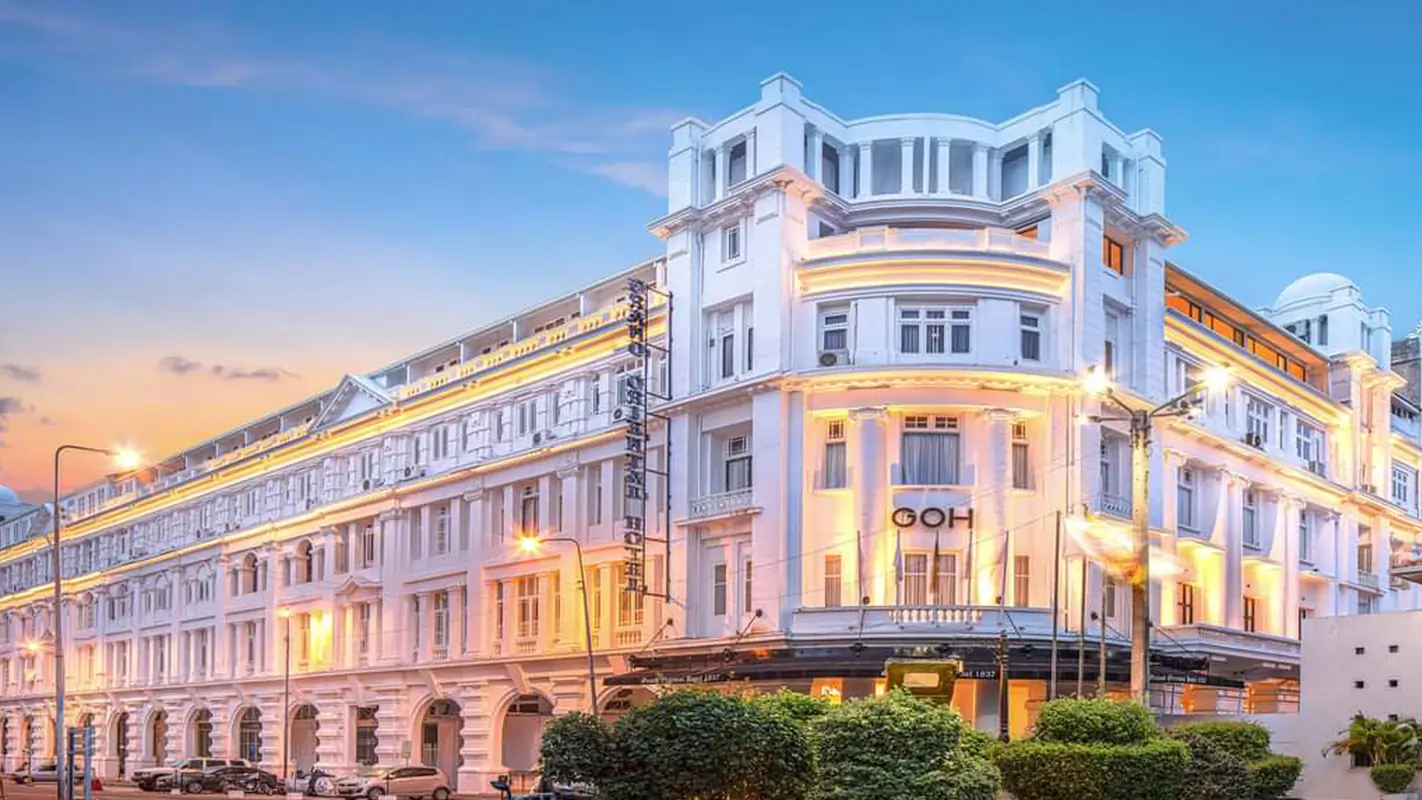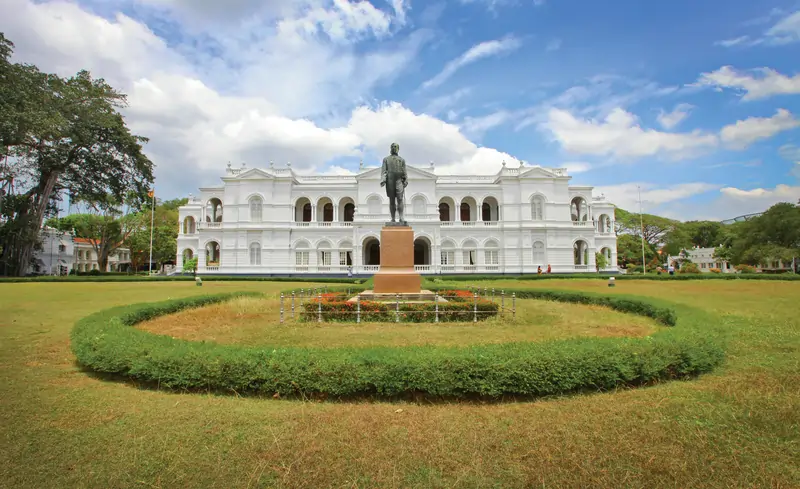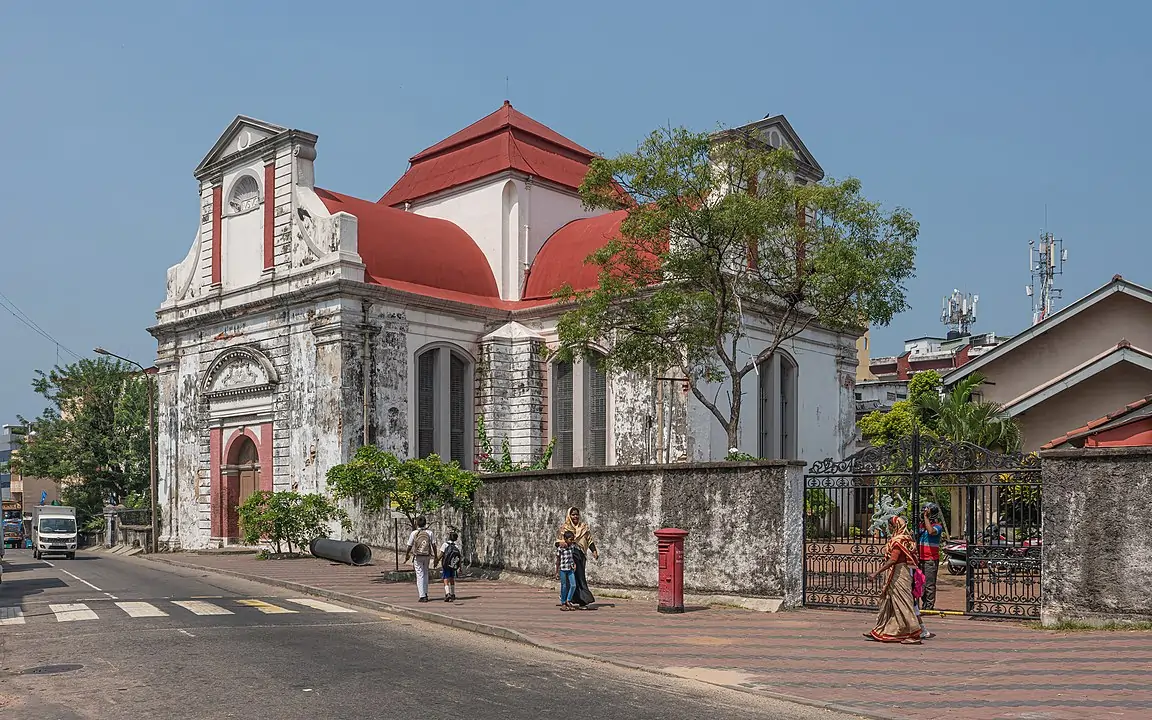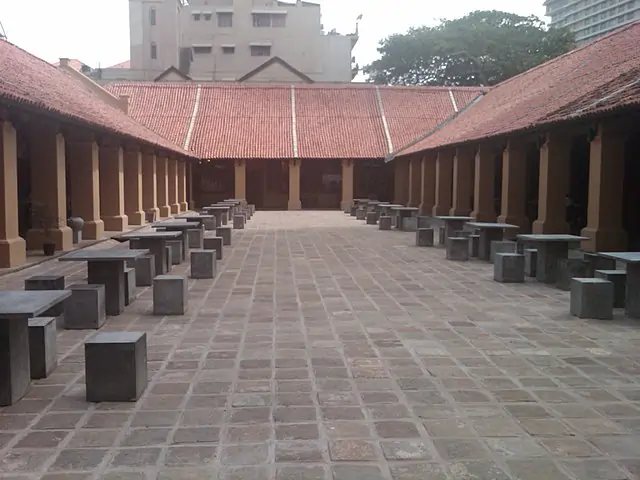Colonial buildings in Colombo
Home
›
Adventure & Activities
›
City Tours / Colonial Buildings
›
Colonial Buildings
›
Colonial buildings in Colombo
The modern and lively city of Colombo is full of hidden gems just waiting to be discovered. From colonial buildings and sites that are heavily influenced by Portuguese, Dutch and English architecture to historic temples that give you silence and peace of mind within the turmoil of the city.

The Grand Oriental Hotel
The Grand Oriental Hotel or GOH (also previously known as the Taprobane Hotel) is a 3-star heritage hotel, located in Colombo, Sri Lanka.
The original building was a single-storey structure with an open verandah to the street, inhabited by a Dutch Governor. In 1837 it was converted into barracks for the British Army. In 1873 it was converted into a hostelry and later into a hotel.
The Grand Oriental Hotel was officially opened on 5 November 1875 and had 154 luxury and semi-luxury rooms.
The Cargill-Millers building in Colombo Fort
David Cargill and William Miller founded their warehouse in York Street in 1844. Nowadays the imposing red and white brick building is probably the most recognized building in Colombo.


The Colombo National Museum
The then governor of Ceylon Sir William Henry Gregory founded the establishment. It was the Ceylon Branch of the Royal Asiatic Society that pointed out the need for a museum to the governor. It was J.G. Smither, architect of the Public Works Department, who designed the building based on Italian architectural style.
The Colombo Lighthouse Clock Tower
Old Colombo Lighthouse or Colombo Fort Clock Tower is a clock tower but used to be a lighthouse. The clock tower was built by the British in 1857 and was the tallest structure in Colombo at the time. The lighthouse at the top of the clock tower is very unusual and believed to be the only one in existence worldwide; the lighthouse is not been operational since 1952.


The Galle Face Hotel
The Galle Face Hotel started out as a Dutch villa called Galle Face House, that had been a meeting place for gentlemen of the colonial era. That was until four British entrepreneurs decided to use it to start a hotel here. The Galle Face Hotel originally opened in 1864, borrowing its name from the charming expanse of ground known as the Galle Face Green, which stretches for a kilometre by the side of the hotel, along the coast, where, in Victorian times, it was a popular place to take a walk in the sea air, or a ride in a horse-drawn carriage.
Wolvendaal Church
Wolvendaal Church (Wolvendaalse Kerk) is located in Pettah, a neighbourhood of Colombo. It is one of the most important Dutch Colonial era buildings in Sri Lanka, and it is one of the oldest Protestant churches still in use in the country. In 1736 Governor of Ceylon, Gustaaf Willem van Imhoff, sought approval from the Dutch East India Company (Vereenigde Oost-Indische Compagnie or VOC) to demolish the existing church (Kasteel Kerk) within the Colombo Fort and construct a new church here. However, the VOC refused this request, and it wasn’t until the arrival of Governor Julius Valentyn Stein van Gollenesse in 1743 that the impasse was overcome. He decided that the new church would be erected in the area beyond the city walls, which at the time was swamp and marshland. The Europeans mistook the packs of roaming jackals for wolves, and the area became known as Wolvendaal (Wolf’s Dale or Wolf’s Valley). Inside the church there is a solidly constructed State Pew with numerous ebony and calamander church chairs (kerkstoels), dating back to the 17th and 18th centuries. On the walls of the Church are many mural tablets while there are many more built into the external walls. The floor is paved with granite flagstones (purportedly brought from Holland) interdispersed with engraved tombstones, of those who lie buried within the church or whose remains were relocated from the Kasteel Kerk. Many famous names of 300 year Sri Lankan history, Dutch, Burgher, Singhalese, Tamil and English, can be found amongst the gravestones within and outside the church. There are five Dutch Governors buried at the church, including the last Governor, Johan Gerard van Angelbeek, who died in Colombo in 1799, three years after the British occupation.


The Old Dutch Hospital
The Dutch East India Company VOC established the Old Colombo Dutch Hospital in 1681 and is said to have been founded to look after the officers and other staff of the Dutch East India Company. The building reflects Seventeenth century Dutch colonial architecture and is the oldest building in Colombo. It is now a happening eating and shopping complex with stores, coffee shops and restaurants.
COLONIAL
BUILDINGS
The architecture of Sri Lanka is influenced by colonisation by the Portuguese, the Dutch, and the English. The colonial architecture of ancient Sri Lanka, formerly known as Ceylon, forms a major part of Sri Lanka’s tourist attractions. Many of the colonial buildings from different eras can be found in cities like Colombo, Galle, Kandy, Negombo, Jaffna and Trincomalee and there are remains of Portuguese, Dutch, and English Forts all around Sri Lanka.

